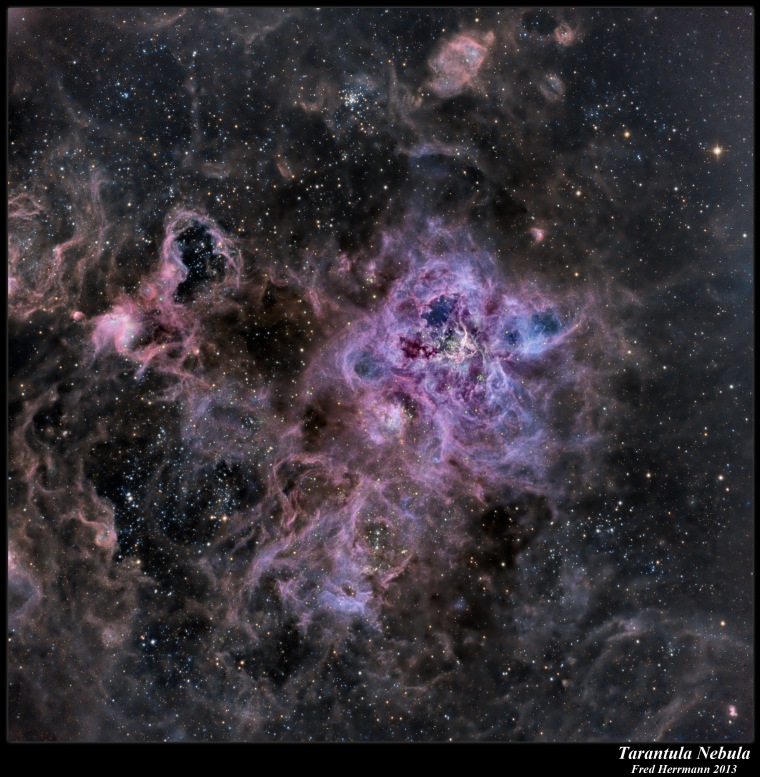The bright core of the Tarantula Nebula is shrouded in shades of purple in this stunning image recently sent in to Space.com.
Also known as 30 Doradus, or NGC 2070, the Tarantula Nebula is located in the southern constellation Dorado (Dolphin Fish), 160,000 light-years from Earth. A light-year is the distance light travels in one year, or about 6 trillion miles (10 trillion kilometers).
Former NASA scientist Fred Herrmann of Huntsville, Ala., submitted this view of the Tarantula Nebula to Space.com on Dec. 1. He used a remotely operated 20-inch Planewave CDK Telescope, FLI PL09000 CCD camera, (narrowband/RGB hybrid Ha x 4, Oiii x 3, 3 x RGB) to capture the view from Siding Springs, Australia. [Strange Nebula Shapes, What Do You See? (Photos)]
"The Tarantula (Nebula) is so intensely bright it would cast a shadow at night were it 'only' 1,300 light-years distant as is the Great Nebula in Orion," Herrmann wrote Space.com in an email. "Some of the brightest and most massive stars known are located in the star cluster located at its core."
To see more amazing night sky photos submitted by Space.com readers, visit our astrophotography archive.
Editor's note: If you have an amazing night sky photo you'd like to share for a possible story or image gallery, please contact Managing Editor Tariq Malik at spacephotos@space.com.
Follow Space.com on Twitter @Spacedotcom. We're also on Facebook and Google+. Original story on SPACE.com.
- Best Telescopes for Beginners | Telescope Reviews & Buying Guide
- The Splendor of the Orion Nebula (Photos)
- Planetary Nebula: Gas and Dust, and No Planets Involved
